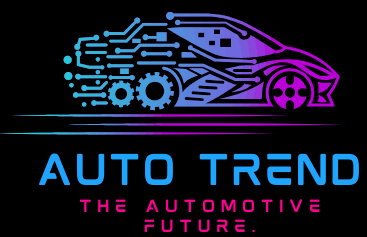
“Electric Auto Now: Navigating the Electrifying Shift in Personal Transportation
Artikel Terkait Electric Auto Now: Navigating the Electrifying Shift in Personal Transportation
- Hello world!
- Trend Auto Drive: Navigating The Future Of Automated Driving
- The Modern Car Hub: More Than Just Wheels And Tires
Pengantar
Welcome to Electric Auto Now: Navigating the Electrifying Shift in Personal Transportation, your definitive source for the latest automotive trends. We’re here to guide you through the ever-evolving world of cars, from technological innovations to captivating automotive lifestyles. Here, you’ll find in-depth reviews, breaking news, and expert insights on the vehicles shaping our future. Prepare to be inspired by the fusion of cutting-edge technology and stunning design, and join our passionate community in exploring the dynamic automotive landscape.
Table of Content
- 1 Artikel Terkait Electric Auto Now: Navigating the Electrifying Shift in Personal Transportation
- 2 Pengantar
- 3 Video tentang Electric Auto Now: Navigating the Electrifying Shift in Personal Transportation
- 4 Electric Auto Now: Navigating the Electrifying Shift in Personal Transportation
- 4.1 The Technological Leap Forward: Beyond the Range Anxiety
- 4.2 Environmental Impact: A Cleaner, Greener Future?
- 4.3 Economic Implications: Job Creation and Market Disruption
- 4.4 Infrastructure Challenges: Building the Grid of the Future
- 4.5 Consumer Considerations: Making the Switch
- 4.6 The Future of Electric Auto Now: A Roadmap to Sustainability
- 5 Penutup
Video tentang Electric Auto Now: Navigating the Electrifying Shift in Personal Transportation
Electric Auto Now: Navigating the Electrifying Shift in Personal Transportation

The hum of an electric motor, the silent glide down a city street – the electric vehicle (EV) revolution is no longer a distant dream. It’s happening now, and Electric Auto Now, a hypothetical yet representative term encapsulating the current state of the electric car market, stands at its vibrant heart. This article delves into the multifaceted landscape of Electric Auto Now, exploring its technological advancements, environmental impact, economic implications, and the challenges that remain in its continued growth. Understanding Electric Auto Now is crucial because it represents a fundamental shift in how we power our personal transportation, impacting everything from our energy grids to our urban planning and even our global climate. This transition, while exciting, requires careful consideration of its various aspects to ensure a smooth and equitable path forward.
The Technological Leap Forward: Beyond the Range Anxiety
One of the most significant aspects of Electric Auto Now is the remarkable progress in battery technology. Early electric vehicles suffered from limited range and long charging times, hindering their widespread adoption. However, advancements in battery chemistry, particularly the development of lithium-ion batteries with higher energy density, have dramatically improved both range and charging speeds. Modern EVs boast ranges exceeding 300 miles on a single charge, with some reaching even further. Simultaneously, fast-charging infrastructure is rapidly expanding, allowing drivers to replenish a significant portion of their battery’s capacity in a matter of minutes, alleviating the once-crippling "range anxiety." For example, Tesla’s Supercharger network and Electrify America’s nationwide charging stations are prime examples of this infrastructure development. This technological progress is not merely incremental; it represents a paradigm shift, making EVs a practical and viable option for a growing segment of the population.
Environmental Impact: A Cleaner, Greener Future?
The environmental benefits of EVs are a cornerstone of their appeal. By eliminating tailpipe emissions, EVs significantly reduce air pollution in urban areas, contributing to improved public health and cleaner air quality. Studies have shown a direct correlation between increased EV adoption and reduced levels of harmful pollutants like nitrogen oxides and particulate matter. However, the complete environmental picture is more nuanced. The manufacturing process of EV batteries, particularly the extraction and processing of raw materials like lithium and cobalt, raises concerns about environmental sustainability and ethical sourcing. Furthermore, the electricity used to charge EVs must be sourced from renewable sources to maximize their environmental benefits. Investing in renewable energy infrastructure, such as solar and wind power, is therefore crucial to ensuring that EVs truly contribute to a greener future. Lifecycle assessments, which analyze the environmental impact of a product throughout its entire lifespan, are becoming increasingly important in evaluating the overall sustainability of EVs.
Economic Implications: Job Creation and Market Disruption
The rise of Electric Auto Now is not just an environmental story; it’s also a significant economic one. The EV industry is creating thousands of jobs in manufacturing, research and development, and infrastructure development. From battery production facilities to charging station installation, the transition to electric vehicles is stimulating economic growth in various sectors. However, this transition also presents challenges. The automotive industry, long dominated by internal combustion engine (ICE) manufacturers, is undergoing a major disruption. Companies are investing heavily in research and development to compete in the EV market, leading to mergers, acquisitions, and even bankruptcies. Government policies, such as tax incentives and emission regulations, play a crucial role in shaping the economic landscape of Electric Auto Now, influencing both the adoption rate of EVs and the competitiveness of the industry. Understanding these economic dynamics is crucial for policymakers and businesses alike.
Infrastructure Challenges: Building the Grid of the Future
The widespread adoption of EVs necessitates a significant upgrade to existing energy infrastructure. The increased demand for electricity to charge a growing fleet of EVs will put a strain on power grids, requiring investments in renewable energy generation and grid modernization. Smart grids, equipped with advanced technologies to manage energy flow efficiently, are becoming increasingly important in accommodating the fluctuating demand from EV charging. Furthermore, the installation of a widespread and accessible network of charging stations is critical. This requires collaboration between governments, private companies, and communities to ensure equitable access to charging infrastructure across different regions and socioeconomic groups. Addressing these infrastructure challenges is crucial for the seamless transition to an EV-dominated transportation system.
Consumer Considerations: Making the Switch
For consumers, the decision to switch to an EV involves several factors. The initial purchase price of EVs is often higher than comparable gasoline-powered vehicles, although government incentives can help mitigate this cost. However, lower running costs, including reduced fuel and maintenance expenses, can offset the higher upfront investment over the long term. Consumers should carefully consider their individual driving needs, charging access, and budget when making a purchase decision. Understanding the different types of EVs available – battery electric vehicles (BEVs), plug-in hybrid electric vehicles (PHEVs), and hybrid electric vehicles (HEVs) – is also important. Researching different models, comparing features and specifications, and test-driving various vehicles can help consumers make an informed choice.
The Future of Electric Auto Now: A Roadmap to Sustainability
Electric Auto Now is not merely a trend; it’s a transformative shift in personal transportation. The continuous advancements in battery technology, coupled with growing consumer demand and supportive government policies, are accelerating the transition to electric vehicles. However, overcoming the challenges related to infrastructure development, ethical sourcing of battery materials, and equitable access to charging remains crucial for a sustainable and inclusive future. The path forward requires a collaborative effort from governments, industry leaders, and consumers to ensure that Electric Auto Now truly delivers on its promise of cleaner air, a healthier environment, and a more sustainable transportation system. The question isn’t if we’ll reach a future dominated by electric vehicles, but how we’ll navigate the transition to ensure it’s a benefit for all. What innovative solutions can we develop to address the remaining hurdles and accelerate the widespread adoption of sustainable transportation?

Penutup
Thank you for visiting Electric Auto Now: Navigating the Electrifying Shift in Personal Transportation, your hub for the latest automotive trends. We hope you’ve enjoyed your journey through the world of innovative and stylish cars. We’re committed to delivering high-quality, relevant, and engaging content for you. Feel free to return often, as we’ll continuously update our website with the latest news, reviews, and insights. Let’s explore the bright future of automobiles together!






